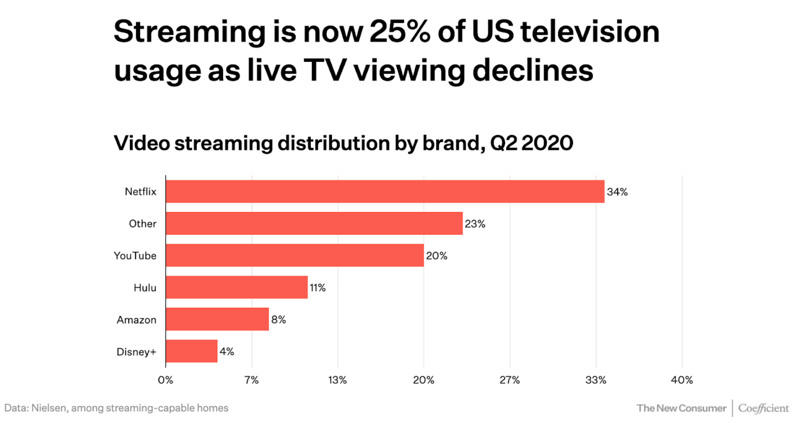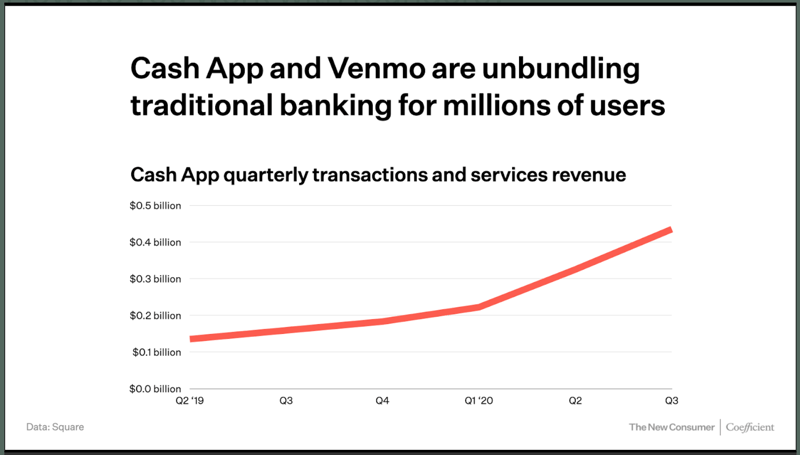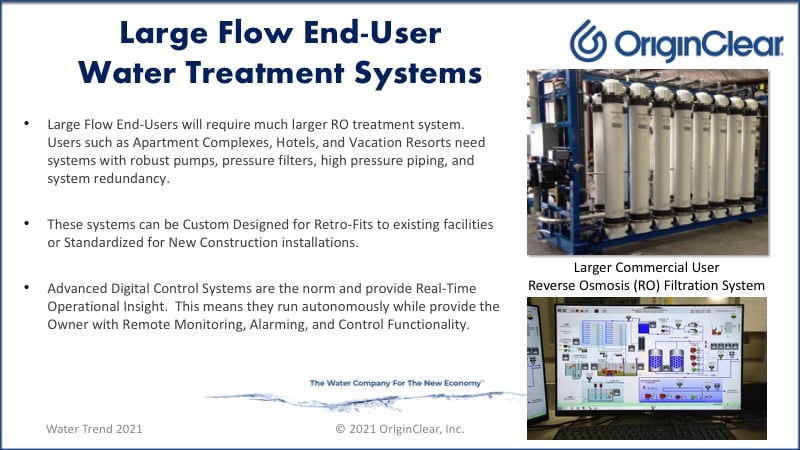Water Is The New Gold: Insider Briefing of 7 January, 2020
Helping you thrive in the world’s ONLY vital, scarce and recession-proof market
Why are living biofilm super-pathogens spreading in water systems? What's the best way to defeat them? We covered the new Stimulus Bill for water...is it adequate? And what does that have to do with the unbundling? I said this will be our AMAZING breakthrough year...Find out why in this briefing.
FEATURED OR COVERED IN THIS BRIEFING — QUICK LINKS
- Ivan Anz, Founder Philanthroinvestors®, interview with the #1 real estate publication, Think Realty, and what he said about OriginClear.
- The unbundling wave sweeping the business world, how it's unfolding in the water industry and why that is so opportune for OriginClear.
- America's newest water safety challenge...that you've never heard of.
- The Legionnaires disease outbreak in Oregon and the threat this biofilm poses to the world.
- What biofilms are, how they relate to water health and are invading our water systems...
- How do biofilms become super-pathogens and how-rapidly are they becoming resistant to treatment?
- What makes biofilms so resistant, how do their colonies multiply and what do they have to do with recurring infections?
- What is behind the accelerating spread of biofilms, how many people are being affected and what can be done about it?
- How we can achieve water safety and protect our resources at the point of use.
- Could the difference between "statistically safe" and "completely safe" be the difference between surviving and succumbing?
- Is there a way to protect human health against dangerous biofilm sheltered pathogens?
- What are physical biofilm treatment technologies and why are they superior to other methods?
- The ultimate biofilm super-pathogen elimination system and how it can solve the biofilm threat.
- Who the experts are in the life-threatening biofilm arena and what they are doing about it.
- An update on OriginClear Finance™, and the initiative to bring to life Water As A Service.
- How you can participate in OriginClear's mission and our investment offerings.
Transcript from recording:
Introduction
Riggs Eckelberry:
Good evening everyone. This is the first webinar CEO briefing of 2021. With me, I've got Tom Marchesello our Chief Operating Officer and Daniel Early, who's trimmed his beard. He's our Chief Engineer. And we're going to move quickly on this because lots to cover, very exciting. And I see our participants are jumping in. So let me do the basics right now.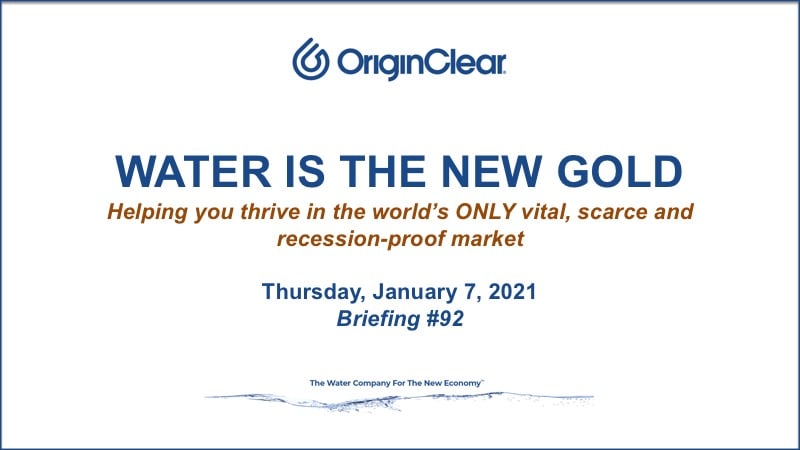
Demand Destruction
This thing about water being the new gold, it's important. There's a word called demand destruction, and that is you saw it happen in 2020 with oil, where all of a sudden demand was destroyed. And this happened with a lot of goods and services in 2020.
Water is in overall, immune to demand destruction, because guess what? You will never stop consuming more water. However, there is something called unbundling, which we know is happening in TV, it's happening in all kinds of areas. And it's happening in water. We'll be talking about that.
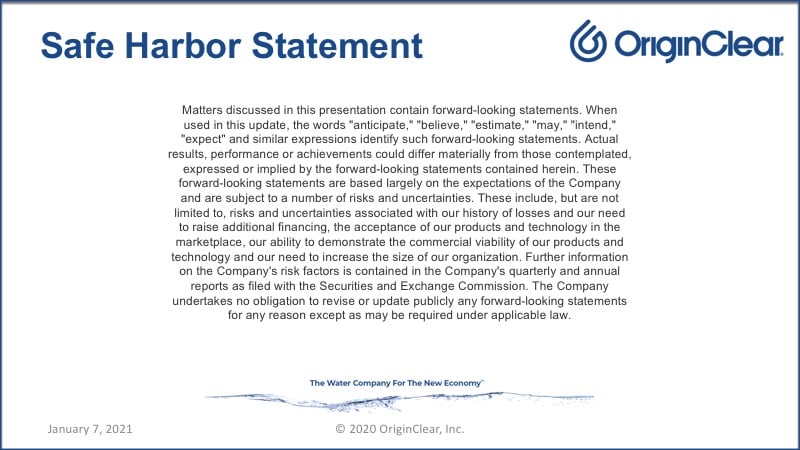
Forward-Looking Statements
So it is January 7th. We'll go on to the usual safe harbor statement, which is that we do our very best to predict the future, but we are not profits.
Invest with Purpose
Okay, great news. Our partner, Ivan Anz was interviewed by the number one real estate publication, Think Realty about his blend of philanthropy and real estate investing, which has been incredibly successful.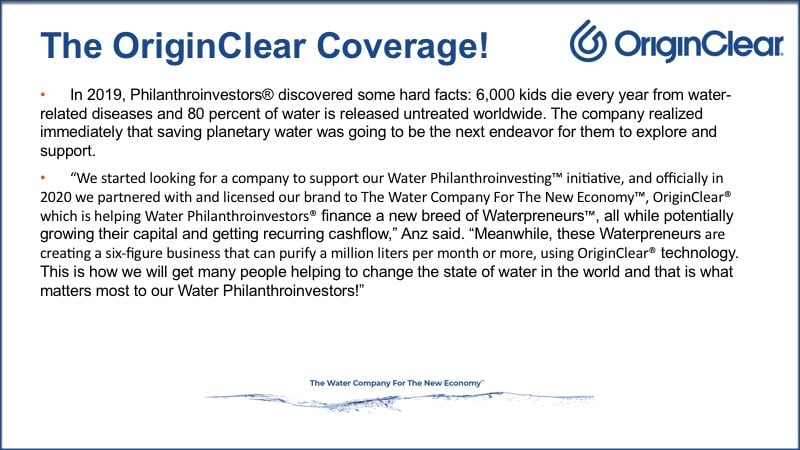
Changing the State of Water
And here we have a little quote about us, which is kind of cool. Saying that basically, they're helping us with some new concepts and international expansion, as you'll be finding out more.
Unbundling
Now, this unbundling term I just mentioned, what does that mean for water? So let me flip over to the story. So as you saw and this is something you know. This is a consumer survey at coefficientcap.com. Very bright deck. This is a huge deck, very important. TV unbundling continuing...
Unbundling and Water
And then also, another thing, unbundling of traditional banking for millions of users, going into Cash App, Venmo, PayPal, et cetera. I spoke to you a few weeks ago about the Ant Group, Jack Ma's Ant Group. Unfortunately, that is going in a very strange place because it looks like the Chinese government is going to take over both Alibaba and the Ant Group.
But looking beyond the politics, because I don't know about you, but I'm done with the politics. We're really talking about things being unbundled and this is happening in water. More and more treatment is happening at the point of use. And that's very important for where we're going with this.
Water Safety Challenge
Okay. America's newest water safety challenge is something you've never heard of. It's not a dog drinking from a toilet, but it's something called biofilm. And there's just been a Legionnaires' disease outbreak. I'm going to play a quick video. Let me just stop sharing, set up the video. And this is a piece of news that just showed up.
Start of video presentation
Disease Outbreak
Juanita Watson: "More than 10 years."
News Reporter: More than a decade is how long Juanita Watson has lived in the Rosemont Court apartments on North Dekum. She'll be the first to tell you there have been no problems, until now.
Juanita: I just found out about it. It's in the water.
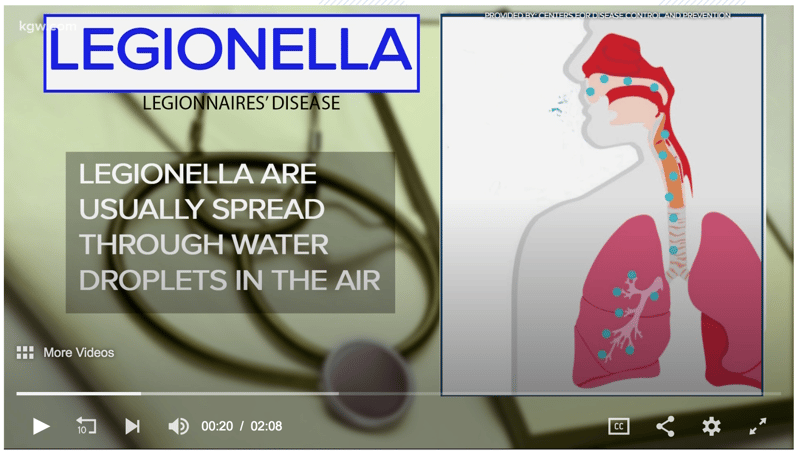
Waterborne
Reporter: It is Legionella. a bacteria that lives on small water droplets or mist, according to Multnomah County health officer Dr. Jennifer Vines.
Dr. Jennifer Vines: The good news is it's not passed person to person. It's typically from some kind of water source where there's been some kind of breakdown in water maintenance.
Reporter: The water has since been shut off at the Rosemont Court apartments, but not before four people who lived there got so sick from Legionnaires' disease, they had to be hospitalized. One of them died.
Dr. Vines: That matches what we know about the disease.
End of video presentation

Biofilms and Water Health
Riggs: Okay. Well you get the general story here that the Legionnaires' disease, which normally... In fact, my father back in 2009, passed away from Legionnaires' disease from an air conditioner in Europe. Well, now it's being caught in the water. We're going to go on to discuss biofilm and water health. And so without further ado, I'm going to let Tom take over here. I'm going to pull up his presentation, take it away, Tom.
Tom: All right. Thanks. Appreciate it. Well welcome to 2021. Holy moly, 2020. I think that there's much to think about there. But we've been talking internally about what can we really contribute in 2021 that really makes people think and gives us a bigger concept for everybody?
And so, we deal with all these issues in water treatment all the time that really matter to a lot of people. And there's this issue that we're constantly helping correct, which is water health and safety, so that people can have safe drinking water, safe sanitation water, and all these other issues.
And we make a lot of comments like, "Oh, there's a machine that fixes this problem." But we don't explain what is the problem because inside the water system, there's something going on there. There is bacterias and there's fungus, and there's all these funky things taking place. And they fall into this wonderful category called biofilms.
Biofilms
Now, biofilms can be incredibly dangerous because what they are, they're colonies. They're the colonization of bacterias and fungus and everything, all living together in this wonderful gooey slime that basically acts like a super pathogen. And it's basically, everything just clings together in this wonderful goop. And it basically helps feed itself.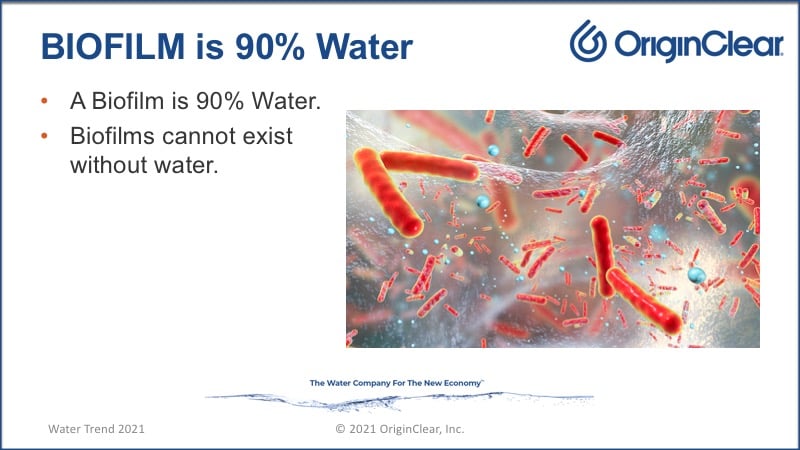
Water-based
Now biofilms typically have to live in a water-based environment. There is no biofilm without water fundamentally. Because a biofilm is really fundamentally, made up of water with all those other particles and molecules together. And then what happens is it becomes this replicating, wonderful environment where things layer themselves together and live in this wonderful package.

Accumulation
And it becomes, what I consider to be, germ super-slime. And it'll accumulate in pipes. It'll accumulate inside of boiler systems. It'll accumulate in your stomach. And so the issue is you don't want biofilms accumulating in your bodies and in the human environments that you're going into.
Now, keep in mind, biofilms are not unnatural. It's a very natural thing that's going on all over the place. This is the combination of all sorts of wonderful bacterias and fungus's that are out there plus proteins that get together.
The issue is you don't want them colonizing and taking over your clean sanitary water supply environments, because it's an ideal breeding ground for bacteria and pathogens that can hurt you as a person.
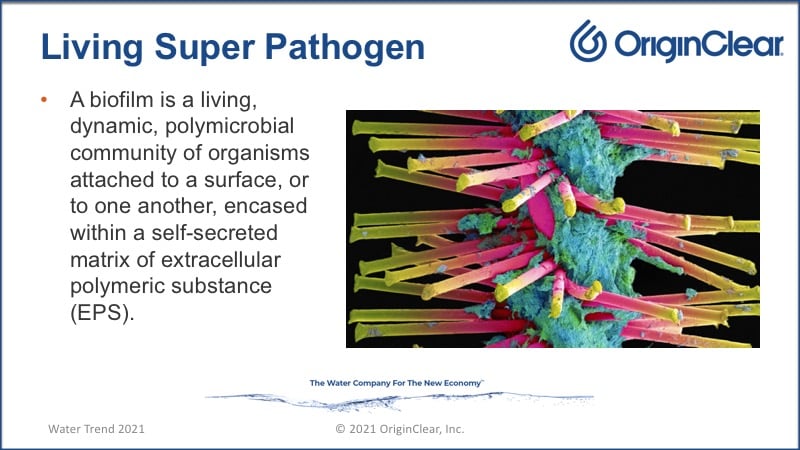
Biofilms Becoming Resistant
So, we're really looking at ways of having to identify what these things are, these living pathogens. And understanding that they really cling to stuff, and they cling like superglue style, and they're hard to get rid of. It's hard to like treat them with chemicals and it's hard to break them down, and you can't just knock them out with like antibiotic kind of things, because gosh only knows the medical society's kind of been trying for a long time, and they're getting stronger. These pathogens are getting stronger so the biofilms are becoming resistant.
So if you kind of flip forward you'll see that it's what's happening right now, is there's this awareness that we'd been researching now. For the water industry, we've known about this stuff for many decades, but in the health professional industry, they're kind of really sounding the alarm in the last 10 years, especially the last five years, where they're saying, "Hey, what's going on with these biofilms?" The issue is, it's the layering.
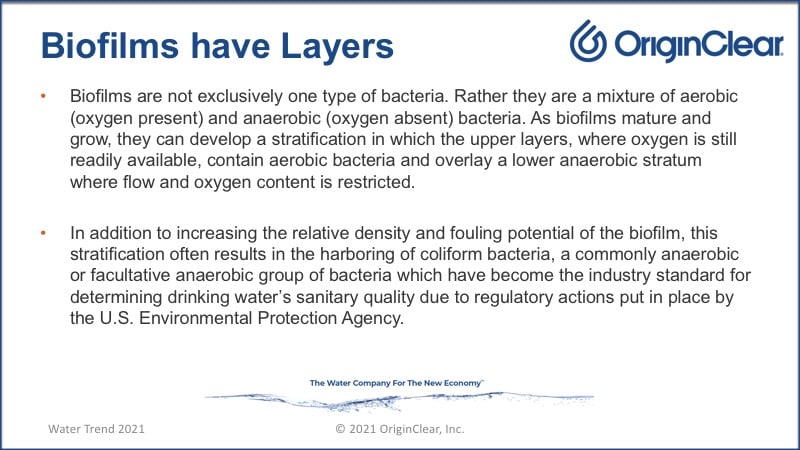
Layered Structure
What happens in a biofilm is that the top layer of the biofilm and the bottom layer of the biofilm don't react the same way to chemical treatment or antibiotic treatment, because sometimes there's an aerobic and an anaerobic layer to this goop. So, what happens is some things eat oxygen and some things don't and what happens is you can end up killing off half the biofilm, a layer, but not treat all the way down to the bottom.
So that's where a lot of combination treatments have to come into the dealing with a biofilm situation. So it's sometimes a little bit physical more than anything else.
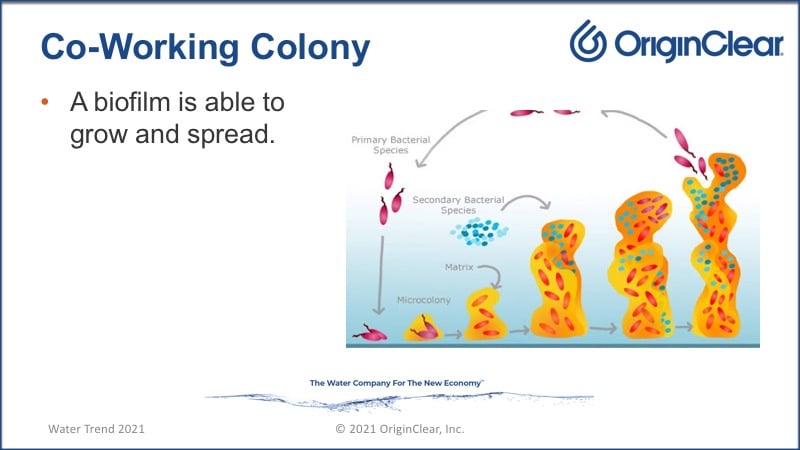
Colony that Multiplies
You can think about this like a colony, and this kind of shows the way they multiply, and there's a lot of wonderful bacterial terms, but the bottom line thing you've got to remember is they'll grow and they'll grow and they'll grow, and then they split off and they move. They literally will walk or travel and cruise to another spot, then attach themselves and start growing all over again, which is super gross.
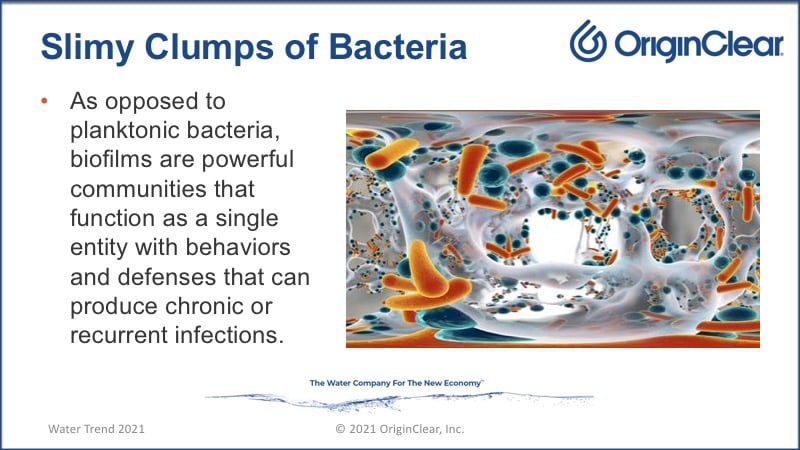
Chronic Recurring Infections
And this is really problematic because these big slimy clumps of bacteria basically contains so much powerful material inside of them, that it basically will continue to produce bacteria and continue to populate itself all over the place and continue to cause chronic reoccurring infections in people. And that's really why this is so dangerous.
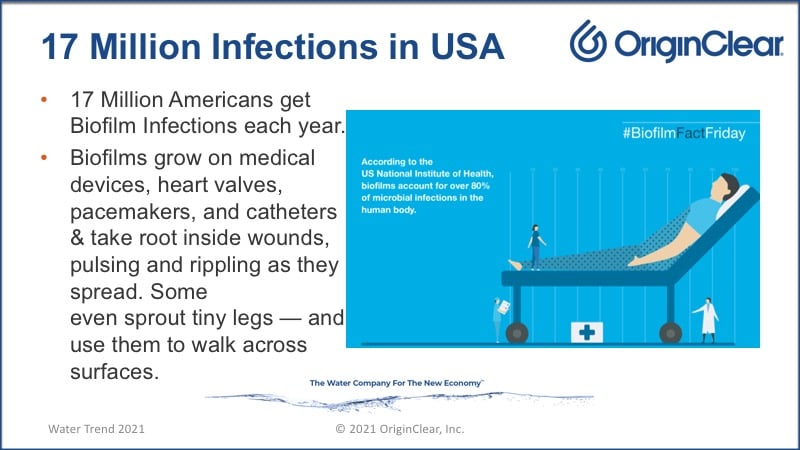
Widespread
I was reading stats that said about 17 million people a year in the US gets some form of a biofilm infection a year. It's a crazy number, right? Because what happens is it takes root inside of a wound and then it just multiplies itself out, that's why sterilization was so crazy important in the medical professions. You can kind of flip your way forward again.
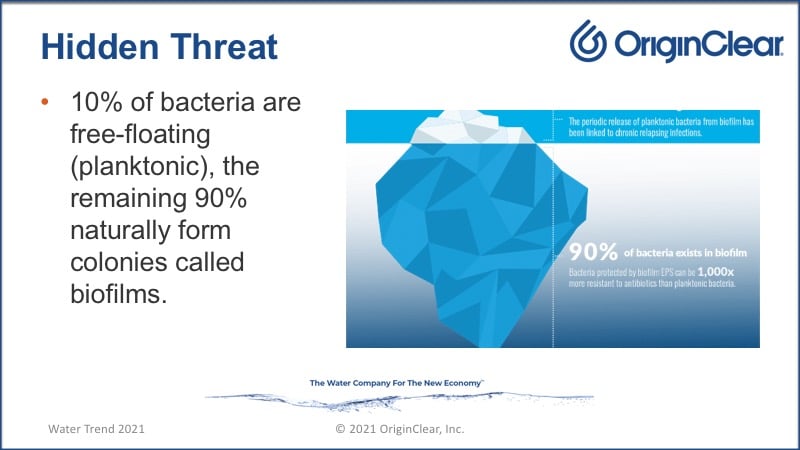
Iceberg Effect
And what you'll see there is that you're really dealing with kind of the iceberg effect. We know there's bacteria out there, like going through COVID this last year, I was talking about viruses and bacterias, but the reality is a biofilm is like this hidden threat, we're not seeing below the surface level here the massive amounts of colonies that are sitting in these biofilms. And that's a big area that we're looking at trying to treat.
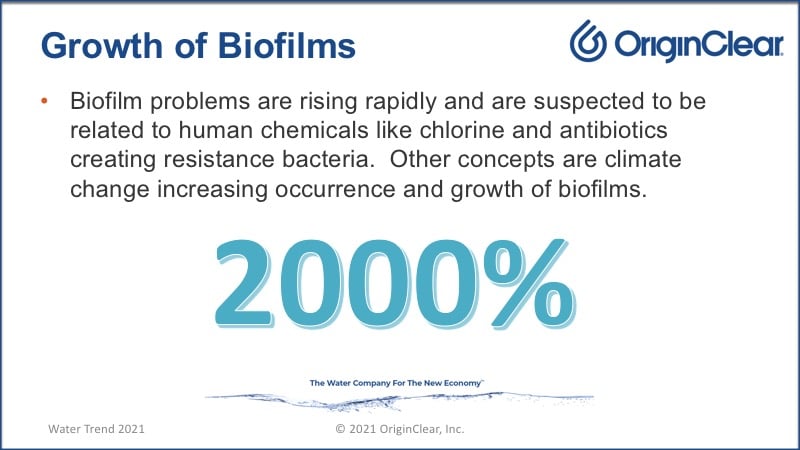
Old Infrastructure
So, biofilms, are they growing out of control? There's a bunch of evidence that says that they're happening more frequently, more often in populated areas now, which means city environments and urban environments. Because we've containerized and pushed water through tubes, piping systems, and those old piping systems are corroding and they're growing all sorts of funky stuff inside of them, and that's, you're dealing with old infrastructure.
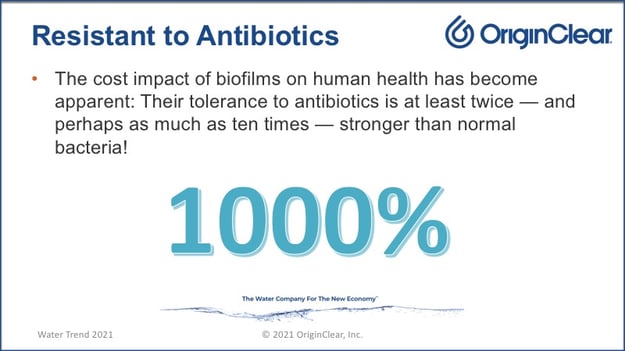
And they're resistant, they're resistant to antibiotics and all sorts of stuff, and they're known to be up to ten times stronger and more resistant to antibiotics and anything else. So that's a crazy resistance level.
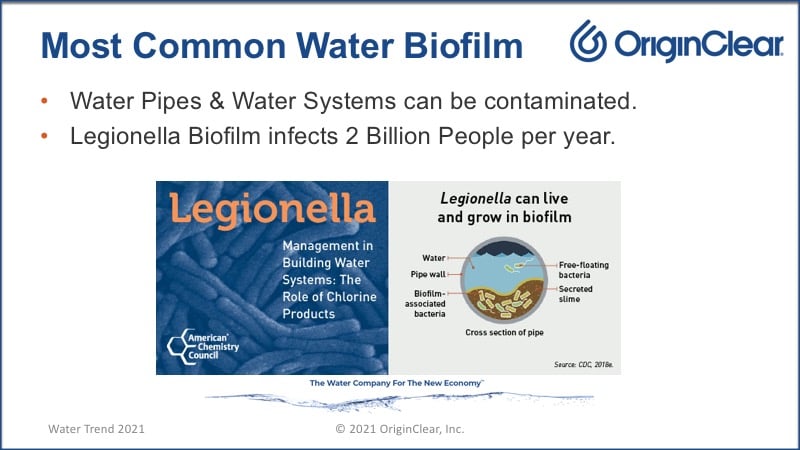
2 Billion People!
And for us in the water business, the easiest thing to talk about and show as an example is Legionella, which we talked about at the beginning. Right now, Legionella is actually on the rise worldwide. There's over 2 billion people a year, right this moment, that actually get Legionella. Now they tend to be in much more poor countries around the world because their water is not treated, but that's a staggering amount of people that are affected by a biofilm of this level.
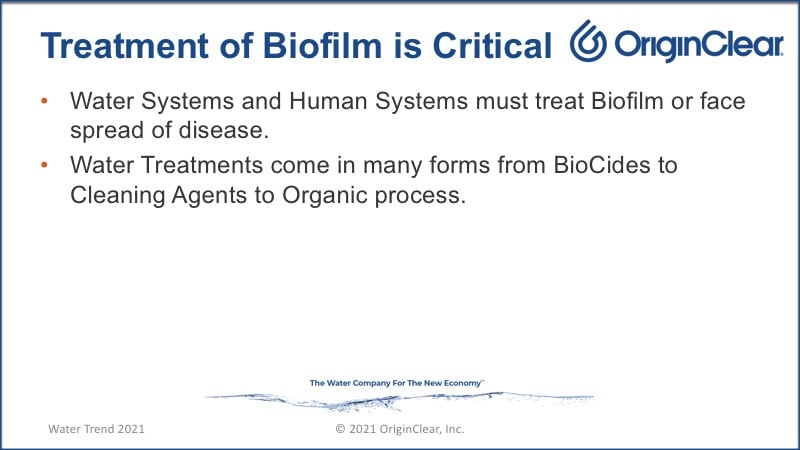
Must Be Treated
And so, I'm going to turn it over now to Dan to talk a little bit more about it, but the bottom line is we have to treat these things, and we have to be aware of these things, so that we know how to protect humans from stuff like this so that we can really address it in a smart way. So, that's kind of what we're talking about.
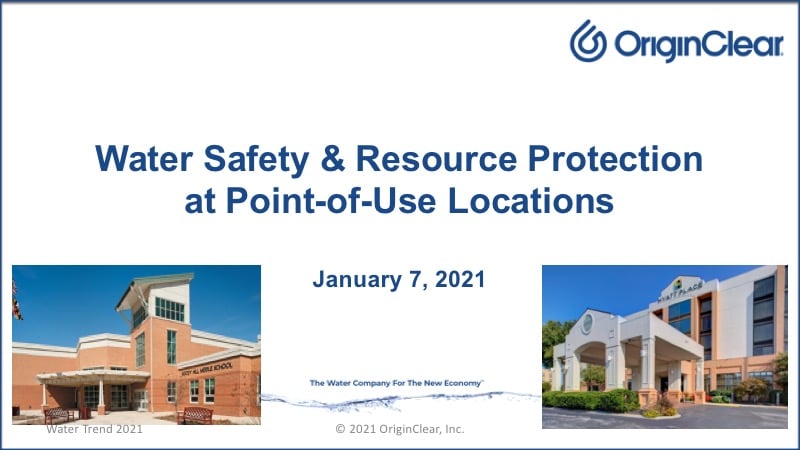
Riggs: Excellent. Thank you for the intro. I appreciate it. We're now flipping to Dan's presentation about, "What do we do about it?" How can we do something about this problem?" Take it away Dan.
Dan: Thank you. Thank you, Riggs, thank you, Tom. Tom did a fantastic job of describing to us what the problem is there, so we're having to deal with these biofilms. And as Tom did indicate, biofilms are naturally occurring, they are everywhere in our environments. There are beneficial biofilms and there are some that are harmful and dangerous biofilms. So when we think about biofilms, what is it that we're dealing with?
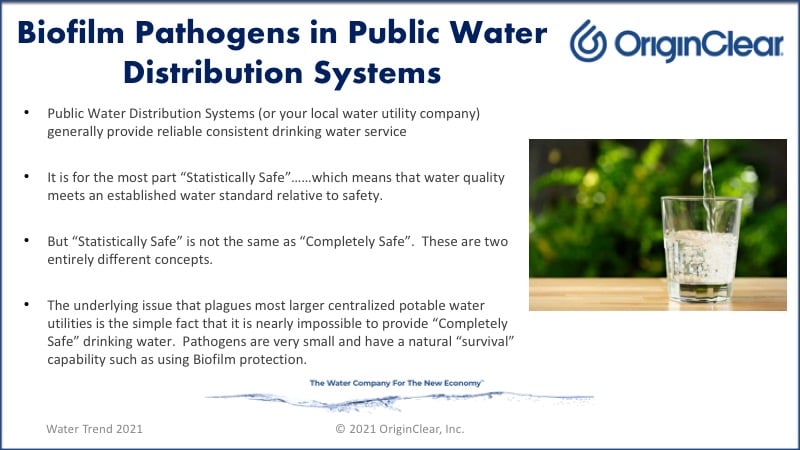
Statistically Safe vs Completely Safe
Well, when it comes to biofilms in drinking water systems, the thing that we see and as evidenced in the video presentation that Riggs showed a few minutes prior, it's very common to see public drinking water supply systems succumb to the effects of pollution and the formation of biofilms and you end up with Legionella bacteria and disease and that type of thing, very unfortunate, but it is the nature of what we're dealing with.
A lot of it has to do with large decentralized water utilities; big pipe systems, water sets for a long time, they have a mechanical failure or some sort of a natural disaster or something kicks in and creates a problem. So there are a couple of terms we want to think about, one of them is statistically safe, versus completely safe. And statistically safe means, hey, this drinking water meets some standard of use and consumption that'll protect the public health and safety. Does not mean it's completely safe, they are two completely different terms.
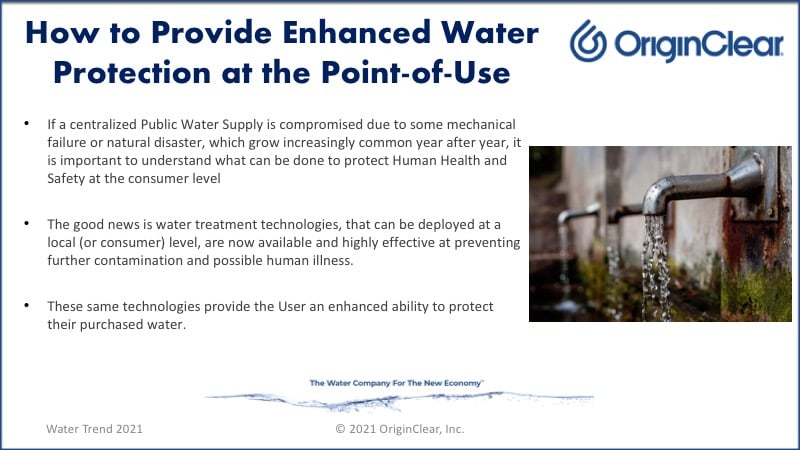
Protecting Human Health
So how do we deal with enhanced water protection at the point of use? Well, there's a couple of things we can do, we can install treatment technologies and do things at the point of use, and this would be where you would have like a single family water service connection, or you might be a hotel or a commercial entity and you have your own water service and you're taking water from a public utility.
In those instances right there, the water coming in you hope it's clean, but if it's not, what capabilities do we have to help protect the human health and safety of the users that are occupying the single family home or that are staying as a guest at a hotel or eating as a customer at a restaurant, or what have you?
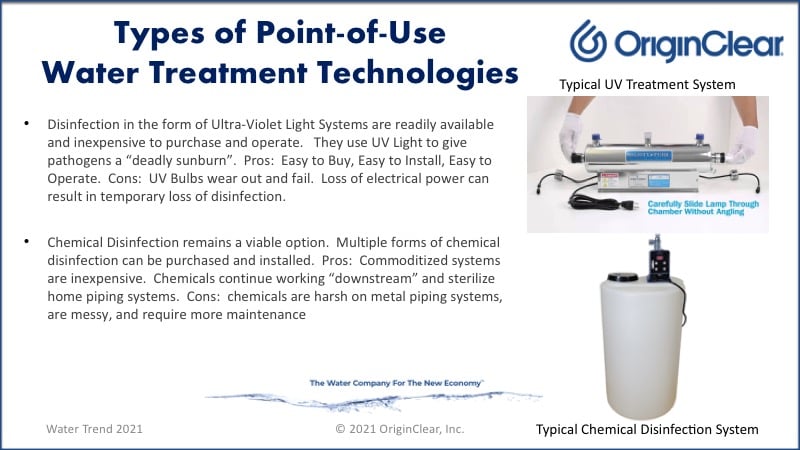
Ultraviolet Disinfection
A couple of technologies do exist, and these are some of the things that we deal with on a daily basis at Progressive Water Treatment. One of them would be using ultraviolet light for disinfection. There are a number of technologies available in the marketplace today.
Ultraviolet light, basically you give the biofilm and the pathogens a deadly sunburn. You destroy their DNA that way. And it's a very effective form of disinfection. Pros to that, it's easy to buy, inexpensive, easy to operate. The cons; the bulbs do wear out if you lose power, and you still have a water supply if you have lost your disinfection. So there is some downside to it.
Chemical Disinfection
The other form of treatment chemical disinfection. Been around a long time, does a very good job. Tom indicated that some of these biofilms where they can be resistant and to a certain extent they can adapt and be partially resistant. But with enough chlorination ,with enough chemical disinfection, you can sterilize your pipe, your whole house piping system, or your hotel piping system, or what have you.
The pros. Chemicals are very inexpensive, been around a long time. They're easy to use. The cons to them is that they are very harsh. Harsh on the equipment, harsh on the distribution and piping systems, especially in older facilities. They're messy. And there are some chemical byproducts that you have to deal with.
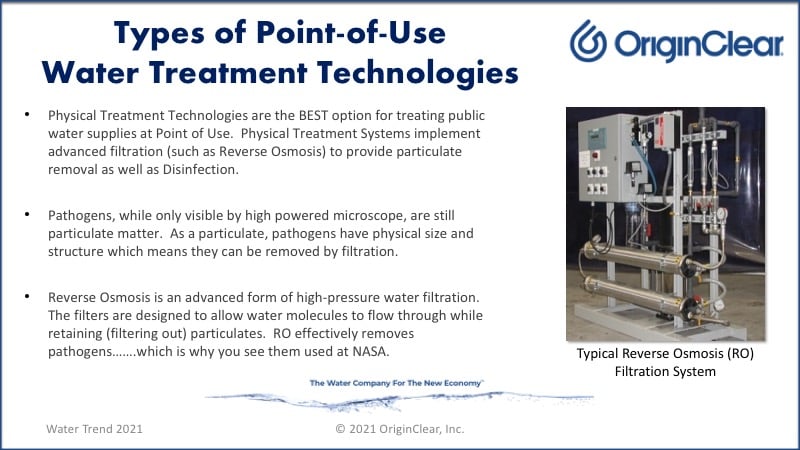
Physical Treatment Technologies
Other types of point of use technologies that we have, the best one that I think that we should look at and consider is a physical treatment technology. This is where we actually go after the particulates, we don't do it chemically. We don't do it by light radiation. We actually do a physical removal process. We're doing a filtration process.
While a biofilm or a pathogen, it is a particle, it's very small. We can only see it through a microscope. However, it is a particle and we can remove it. A good example of that technology would be a reverse osmosis type filtration system. And this is a term you've probably heard a little bit about.
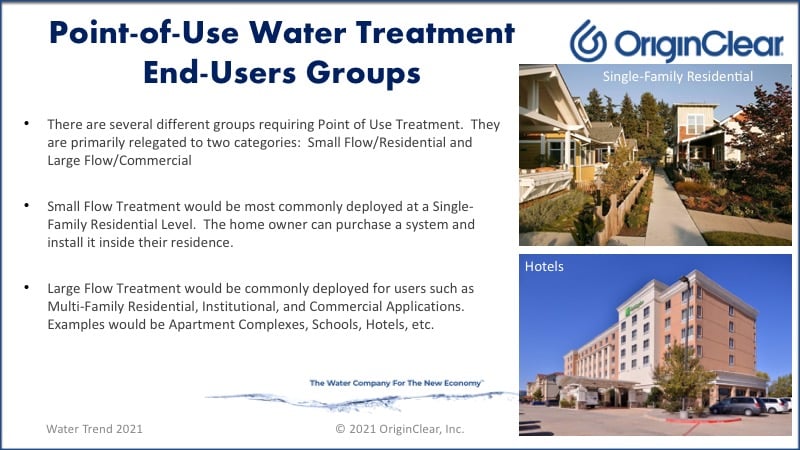
Two Categories
Reverse osmosis systems, they have been in the marketplace for about 30 years and they're now commoditized. They are smaller. They've been able to scale these things down where they used to be mainly for huge municipalities and huge commercial operations. Now you can scale them down for the small flow end user. You can get single family home residential reverse osmosis units.
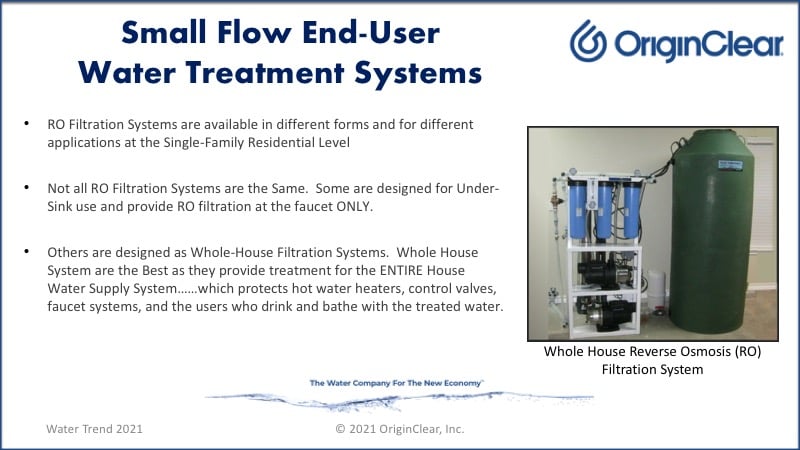
Whole-Home System
There are two forms of those ones. The under sink RO unit treats the water at the faucet. My preference is using the whole house system. Comes in from the public utility, you intercept that water, you do a reverse osmosis physical treatment process, and then you've protected your home.
Much More Robust
If you move to the next slide, the next one is large flow systems, and this would be for a hotel or resort or something, and may have access to public water. In this instance, if they want to protect from Legionella and other types of forms of water pollution common in your distribution system, we just scale these systems up. They tend to be much, much more robust. I mean, we're talking very, very advanced technologies. They all have remote monitoring and alarming. It's a very effective way.
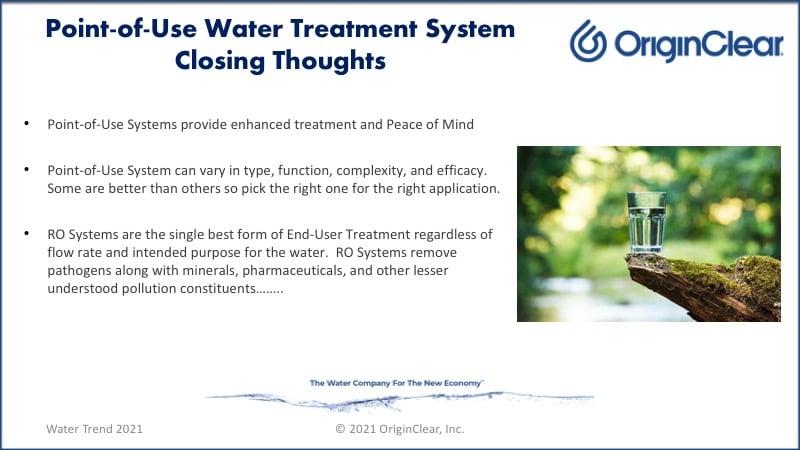
Conclusions
So of all the three forms of treatment, ultraviolet light, chemical disinfection, physical treatment, physical treatment is the one that we like to look at and like to use the best. It does a good job of filtration and it has ancillary capability and ancillary beneficial impact on your water supply.
So there's a good A to Z overview of biofilms and pathogens and public water supplies and how you can deal with those things at your point of use customer location. Back to you Riggs.
What We Are Doing
Riggs: Well, thank you. And I wanted to... I appreciate the overview there, and you're talking about point of use, which is of course, especially of ours. How are we intervening right now in the biofilms area?
Dan: Well, a couple of ways. We are currently delivering point of use systems for some hospitality customers, hotels, and they have recognized that they have got issues, they've got concerns about the quality of public water coming into their facility.
They want to have the best experience for their guests. They want to reduce risks. So we're working with a number of different hospitality end user customers, and we're delivering reverse osmosis based treatment systems for those. So that's one example.
Expert At It
Riggs: Essentially, what you're saying is that the reverse osmosis that we are specialists in, is something that is probably the very best way to go. And that's what we do every single day, is I think what you are saying.
Dan: It is. We, the guys down at McKinney, at Progressive Water Treatment™ are experts at doing reverse osmosis. This is amazing technology and it's affordable. It's not like, you're not buying the Cadillac today, you're buying the Chevrolet and it's there, it's available for everybody.
Riggs: I love it.
Reason it Works
Tom: The reason it works is because of the size of the micron size, because when you're doing filters and ultra filters, the smaller the filter particle space, the bigger particle can't get through it. So it gets caught and then it's pushed away. So then those bacterias don't make their way through.
Riggs: Reverse osmosis, it can get salt out of salt water, so it certainly can handle small sized particles. Thank you, gentlemen. I appreciate it.

Well, I want to have some more reports, so you know we've been talking about building an OriginClear fund, and I want to give you the latest update on what's been happening here.

OriginClear Finance™
As of 7th of January, we now have a second memorandum of understanding in hand. This one's for 2 million. So we've now got commitments for $3 million worth of investment. And I will be meeting the investor in Miami I believe, later this month, or early in February. And finally the $6 million one is still in the air, but is likely to follow the $12 million one. So all in all, we're trying to build a $10 million fund. Why?
Water As A Service
Well, the new new thing is really what's called water as a service, where companies do not pay for their machines, their system upfront, but they pay the bill along the way the same way people rent houses, and so on. And the same way that you pay your water bill to the local city, right?
Causing Unbundling
Well, now that companies more and more have to do their own systems and are forced to rely on themselves because infrastructure has just fallen apart. I mean, look at what's happened. The stimulus bill had a total of $6.9 billion for both energy and water. Water alone, that's falling a hundred billion dollars behind every year.
So the central infrastructure is falling apart, which is causing this un-bundling that I've been talking to you about. And so as companies, businesses and industry agriculture, et cetera, have to start doing their own treatment, they lack capital. And this makes it very, very slow.
Speeding it Up
Tom, you've been living through this deal with the trailer park in Troy, Alabama, which is a great deal, but when is it going to happen? Why? Because in this case, they chose to go with commercial leasing, blah, blah, blah.
The point is, if we can build a fund that has capital that allows people to just sign on the dotted line, and they have maybe it's a 15 year commitment, whatever it is, but they can always exit, because remember, Modular Water Systems™ means portability. So it's important that people know that they can get out.
Now, of course, it's not done for free. They're going to give up their security deposit, et cetera, but it's much easier to get people into something that they can exit. And that's where we come into this concept of Modular Water Systems, our technology, combined with pre-financing. And now all of a sudden you have the ability to just rip through the whole point of use water treatment industry.
A Captive Bank
So this is really, really huge for us. And I'm working flat out to get this done. We are putting it together as I speak in terms of the actual subsidiary that will hold this capital. Basically, it's going to be like GM Financial or Toyota Financial. These are the captive banks of these auto companies, but we are building a captive bank for our deals.
Benefits
Obviously it will do great things for our deal flow. It'll mean revenue for Progressive Water Treatment, and it will also mean that our deal velocity will speed up, because people don't have to come up with money upfront. So, this is very strategic for us this year. And, it's probably the number one thing that will drive what I want to do, which is to uplist, hopefully this year and later this year, to a senior exchange like the NASDAQ.
And that is, as you get the money into this fund, even though it's a independent fund, and well secured and so forth, it is ours. So, this is our asset. And, what you need, number one is to get on the NASDAQ is assets. So if we can have assets, then it's 90% of the challenge. So, stay tuned on this, it's going very, very well and we will be doing much more.
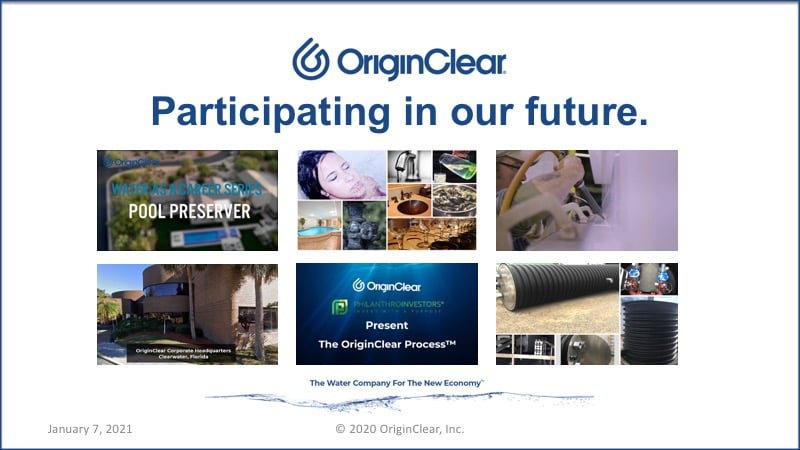
Offer for Unaccredited Investors
Okay. So, I'm going to just get into a little bit of how you can participate in the good stuff at OriginClear. Now, I want to say that there is an unaccredited offering, we don't talk about it much in this briefing but it's wonderful. Because, I've had people invest up to $50,000 in this offering, but the minimum is $500. They don't have to prove that they are accredited. And so, that is a wonderful thing. If you just go to originclear.com, big red thing at the top, you can choose, you can say, I'm not an accredited investor, it'll take you there. And, I would love you guys to invest on that.
Offer for Accredited Investors
But, the strategic one is what we call, the get paid to wait offering, and that is only for accredited or non U.S. investors. By foreign we only mean that they're investing from outside the U.S., they can be U.S. people, but they have to be investing from outside the U.S.
And, I might also add that when somebody invests from outside of the country, we don't have to prove they are accredited for the U.S. Securities and Exchange Commission, but they do have to comply with the local country laws.
10% Cash Dividend
Now, here's, what's great. 10% cash dividend means that your investment goes in, you get your 10% cash dividend. We've now gone well over two years, paying dividends on time. People love us for that.
Double at Conversion
And when you're ready, you double your investment in stock, priced at the later time. And this is huge, because you don't have to worry about, "Oh, is the price down?" "Is the price up?" But by the same token, if the stock starts to run, then you probably should convert to stock and get the run.
Everybody gets a Warrant
One of the other thing that's great is everybody gets what's called a warrant, priced at five cents. So let's say, let's just assume the price of the stock is currently five cents. I think it closed at four cents today, but let's just say it's five cents. So then, if the stock goes to 10 cents, then you can take, essentially you could pay for this warrant, which is an option. With the stock, so lets say you invested a thousand dollars, you would end up with $50,000 worth of stock, if the stock went to 10 cents. We can explain this in great detail.
More Warrants
There's three more warrants, which means up to four times more leverage in your investment than the original. Which, if my math is correct now, you've got a 6X opportunity from the 200% redemption, the one year cashless warrant, and the three more warrants as people invest larger amounts, and they don't have to do it all at once. So very, very good structure, and you have lots of time. The last one for example, is a five-year warrant, so it's a good way to go.
Double Your Investment
So, also very important, if you're an existing investor, please call Ken, because we have a method for you to double your investment without investing more capital. No, it's not some wacky concept. It's very, very straightforward, and I think you will like it very much. Also, Ken will be able to tell you a little bit more about what's going on with the company, and more than I can do in these few minutes.
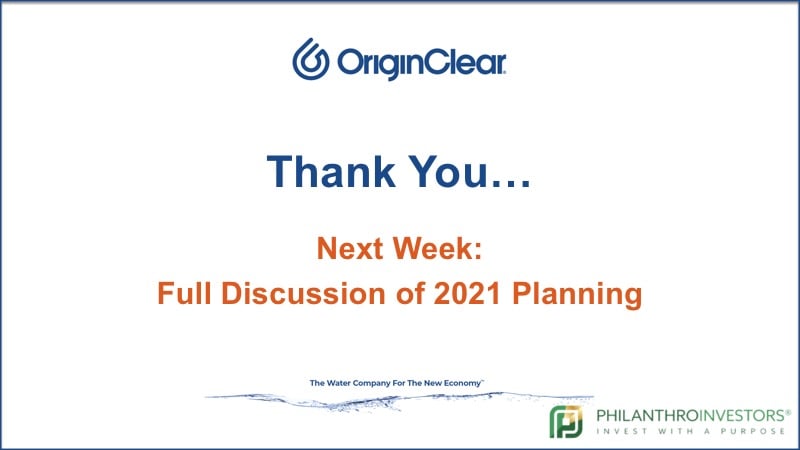
The Future
Okay. Wow. Well, we've managed to do it so fast. And Dan and Tom, I really appreciate it. Next week, I will be talking more, and more about 2021 planning. What's going to happen with the company internally? Tom sent me his strategy for what he's doing in day-to-day operations of the company, building a marketing department, increasing revenues, etc.
We happen to be well up on cash and, I'm giving you like a scoop right now. We were up on cash substantially in 2020, over 2019. The challenge here is that we have to get what's called recognized revenue, which means that the milestones have to be completed.
That means there's a cultural requirement that the company has to become very much in the game of doing what's called recognized revenue. That's called basically milestones. And, Tom is going to be doing that fun stuff. So, next week we will get into that in further detail, it should be a lot of fun.
Thank you, Tom. Thank you, Dan. Thank you all for participating. I see that so many of you stuck around. It's a real pleasure, and we're going to see you next week, next Friday. Have a great evening, and I'll see you next Thursday night. Have a nice weekend.
Register for next week’s Insider Briefing: HERE
%20250px.png?width=250&height=53&name=OriginClear%20Logo%202019%20(RGB)%20250px.png)



